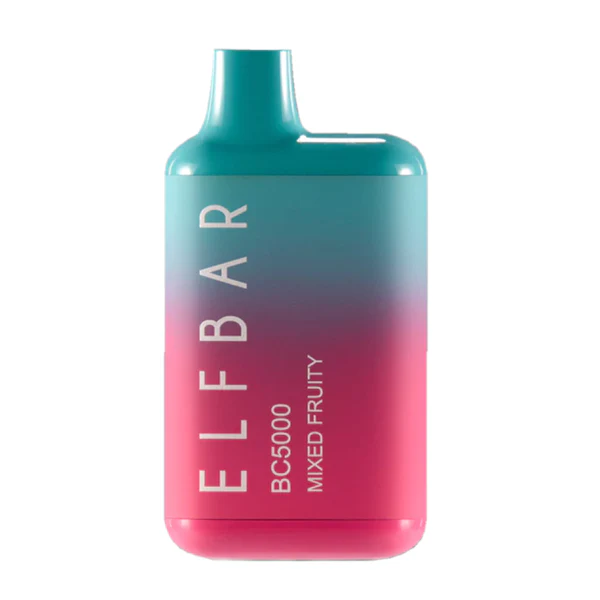In recent years, disposable vapes have surged in popularity, especially among young adults and teenagers. These sleek, single-use devices offer a convenient and discreet way to consume nicotine and other substances, appealing to those seeking an alternative to traditional cigarettes. This article delves into the rise of disposable vapes, examines the associated risks, and explores the evolving regulatory landscape.
The Emergence of Disposable Vapes
Convenience and Accessibility
Disposable vapes, also known as disposable e-cigarettes, are designed for single-use. Unlike rechargeable vape devices, they come pre-filled with e-liquid and a fully charged battery, eliminating the need for maintenance. This convenience has made them particularly attractive to users who are new to vaping or those who prefer a hassle-free experience.
Youth Appeal
The sleek design and variety of flavors available make disposable vapes particularly appealing to younger demographics. From fruity and dessert-inspired flavors to traditional tobacco and menthol, the diverse range of options caters to different tastes. The discreet nature of these devices, often resembling USB sticks or small gadgets, also makes them easy to use without drawing attention.
Marketing Strategies
Aggressive marketing campaigns have played a significant role in the rise of disposable vapes. Social media influencers, targeted online ads, and attractive packaging all contribute to their popularity. Many brands have capitalized on trends and cultural moments to position their products as trendy and modern.
Health Risks and Concerns
Nicotine Addiction
One of the primary concerns with disposable vapes is the high nicotine content found in many of these products. Nicotine is a highly addictive substance, and its presence in appealing flavors can lead to increased use among young people. This can result in nicotine dependence and other associated health issues.
Lung Health
While disposable vapes are often marketed as a safer alternative to smoking, they are not without risks. Studies have shown that vaping can cause lung irritation and inflammation. There have been reports of severe lung injuries, known as EVALI (e-cigarette, or vaping, product use-associated lung injury), linked to vaping, although these have been more commonly associated with products containing THC or other additives.
Chemical Exposure
Disposable vapes contain various chemicals, including propylene glycol, glycerin, flavorings, and potentially harmful substances like diacetyl. Long-term exposure to these chemicals is still being studied, but early research suggests potential risks to respiratory health.
Youth and Brain Development
Nicotine exposure during adolescence can have long-lasting effects on brain development. It can affect cognitive functions such as attention, learning, and memory. The developing brain is particularly susceptible to the addictive properties of nicotine, making young users more vulnerable to addiction.
Environmental Impact
Waste Generation
The single-use nature of disposable vapes contributes to significant environmental waste. These devices are not biodegradable, and improper disposal can lead to littering and environmental pollution. The batteries and plastic components pose additional hazards to wildlife and ecosystems.
Recycling Challenges
Recycling disposable vapes is challenging due to their design. The combination of plastic, metal, and electronic components makes them difficult to disassemble and recycle effectively. This results in a substantial amount of e-waste, contributing to the growing global e-waste problem.
Regulatory Responses
Age Restrictions
In response to the growing concerns about youth vaping, many countries have implemented stricter age restrictions on the sale of disposable vapes. In the United States, the minimum legal age for purchasing vaping products is now 21. Similar measures have been adopted in other countries to prevent underage access.
Flavor Bans
To curb the appeal of disposable vapes to young people, several jurisdictions have introduced bans on flavored e-cigarettes. These bans aim to reduce the attractiveness of vaping products by limiting the availability of flavors that are particularly enticing to young users.
Marketing Restrictions
Regulations on advertising and marketing practices have also been tightened. Many countries now restrict the marketing of vaping products on platforms that are popular with young people, such as social media. This aims to reduce the exposure of these products to minors.
Product Standards
Governments are increasingly focusing on establishing product standards to ensure the safety of disposable vapes. These standards may include limits on nicotine content, requirements for child-resistant packaging, and restrictions on certain harmful ingredients. Such measures are designed to protect consumers and reduce health risks.
The Future of Disposable Vapes
Innovation and Harm Reduction
As the vaping industry continues to evolve, there is potential for innovation that prioritizes harm reduction. This could include the development of lower-nicotine products, safer formulations, and more sustainable designs. Some companies are exploring recyclable or biodegradable options to address environmental concerns.
Public Health Campaigns
Public health campaigns play a crucial role in educating the public about the risks associated with disposable vapes. These campaigns aim to inform users, particularly young people, about the potential health consequences and encourage them to make informed choices. Effective communication strategies are essential to counteract the marketing efforts of vape companies.
Ongoing Research
Continued research is needed to fully understand the long-term health effects of disposable vapes. This includes studies on the impact of different chemicals used in e-liquids, the effects of nicotine on brain development, and the potential benefits and drawbacks of vaping as a smoking cessation tool. Robust scientific evidence will be vital in shaping future regulations and public health policies.
Conclusion
Disposable vapes have become a prominent feature of the modern nicotine landscape, offering convenience and variety to users. However, their rise has brought significant health, environmental, and regulatory challenges. Addressing these issues requires a multifaceted approach, involving stricter regulations, public health initiatives, and ongoing research. As the industry evolves, the focus must remain on protecting public health and minimizing the negative impact of disposable vapes on both individuals and the environment.




